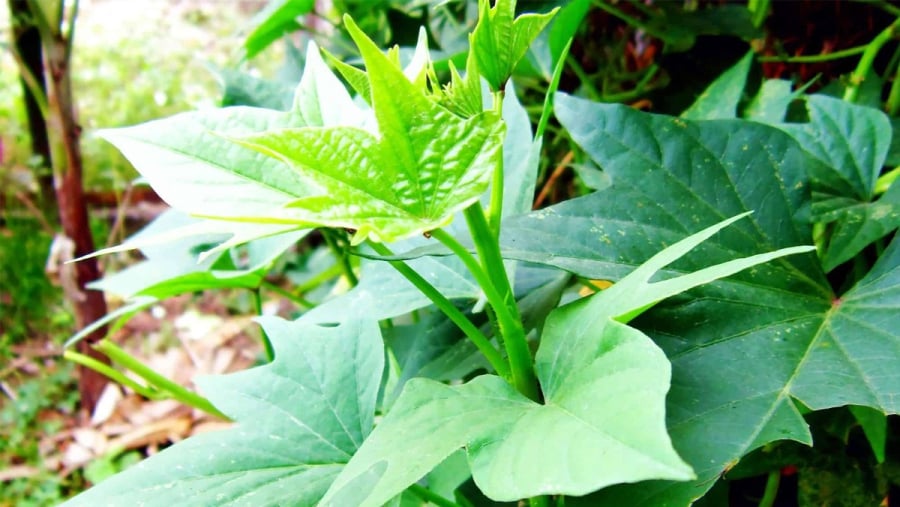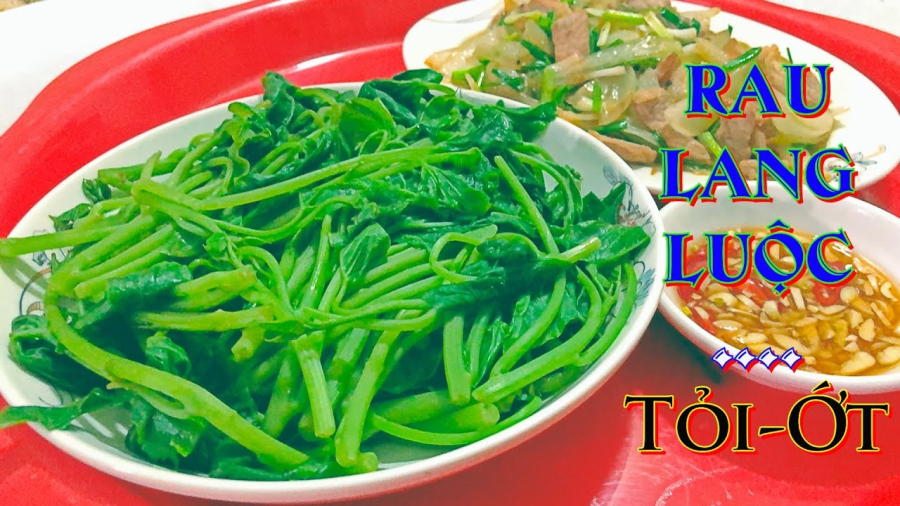The benefits of sweet potato leaves for health
Prevent constipation
Sweet potato leaves are sweet, cool, and contain a high amount of fiber, which helps to regulate bowel movements. In particular, sweet potato leaves contain about 1.95% – 1.97% laxative resin, which helps regulate bowel movements and prevent constipation.

Prevent obesity
Sweet potato plants are low in starch and high in fiber, making them great for people who are on a weight loss diet. These plants provide essential nutrients to the body and reduce appetite, making them a good option for people who want to maintain a stable weight.
Inhibit pancreatic cancer
In laboratory studies, sweet potato extract has been found to have a strong anti-cancer effect on colorectal, breast, prostate, colon, and lung cancer cells.
Polyphenols and anthocyanins regulate cell cycle, induce cell apoptosis, and reduce angiogenesis. IbACP extracted from sweet potato leaves is capable of inhibiting pancreatic cancer.
Good for cardiovascular health
In Africa and Indonesia, sweet potato leaves are used as a herbal remedy for cardiovascular diseases.
Some mouse model studies have found that sweet potato leaves can lower blood lipids and prevent atherosclerosis. The insoluble fiber in sweet potato leaves inhibits lipid absorption in the small intestine.
Help with blood clotting and reduce menstrual pain
There are many foods that provide vitamin K to the body, and sweet potato leaves are a rich source of this vitamin.
Vitamin K is an essential vitamin that the body uses to help with blood clotting, therefore aiding in the quick recovery of wounds and reducing menstrual pain and premenstrual syndrome.
Sweet potato leaves support blood sugar improvement in diabetic patients
For high blood sugar levels, the flavonoids in sweet potato leaves can promote glucose uptake in peripheral tissues and enhance insulin secretion, reducing the self-destruction of pancreatic β cells.
In addition, quercetin activates β cell regeneration in the pancreas, leading to increased insulin secretion.
As a result, the insulin secretion pathway is stimulated, reducing insulin resistance and helping to fight against diabetes.
Sweet potato stems contain a substance similar to insulin that is not present in older leaves. Therefore, diabetic patients can use sweet potato stems as a medicine to protect their health.
How to boil green sweet potato leaves without bitterness
Ingredients
- 2 bunches of sweet potato leaves
- Salt
- Dipping sauce for boiled sweet potato leaves: Chili garlic oil, shrimp paste or roasted peanut sauce.
Instructions
Remove the old stems and yellow leaves from the sweet potato leaves, and only use the young stems and leaves. Then soak them in diluted salt water for about 10 minutes, and rinse them thoroughly several times, until the water runs clear. Soaking the leaves in salt water helps remove insects and parasites attached to the surface of the leaves, and especially helps to reduce the resin content in the vegetables.
In addition to salt, you can also use vinegar to remove the resin from the sweet potato leaves. Choose sweet potato leaves that are bright green, have fewer leaves, young stems, and feel easy when pressed.
How to boil sweet potato leaves
Bring water to a boil in a pot, then add the sweet potato leaves. In order to boil the leaves green and prevent them from turning black or bitter, you need to use plenty of water, which will prevent the leaves from turning black or bitter when boiled.
Boiling sweet potato leaves with plenty of water will keep them green and prevent bitterness.

Scoop the cooked sweet potato leaves onto a plate, making sure to remove any excess water at the bottom of the plate to prevent the lower layer of leaves from becoming mushy.






































